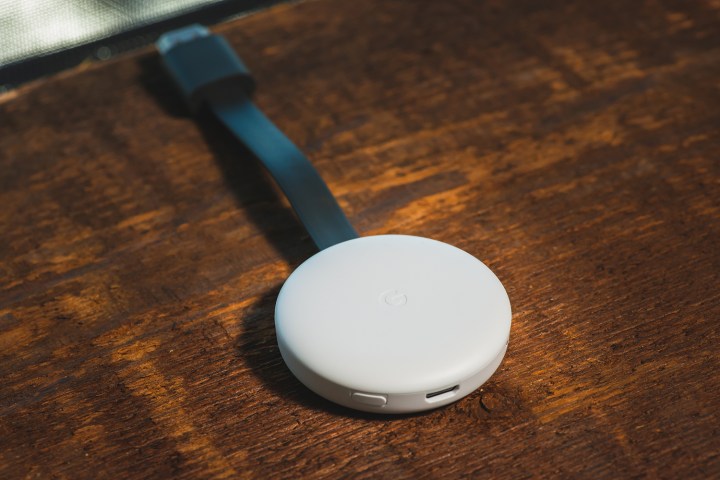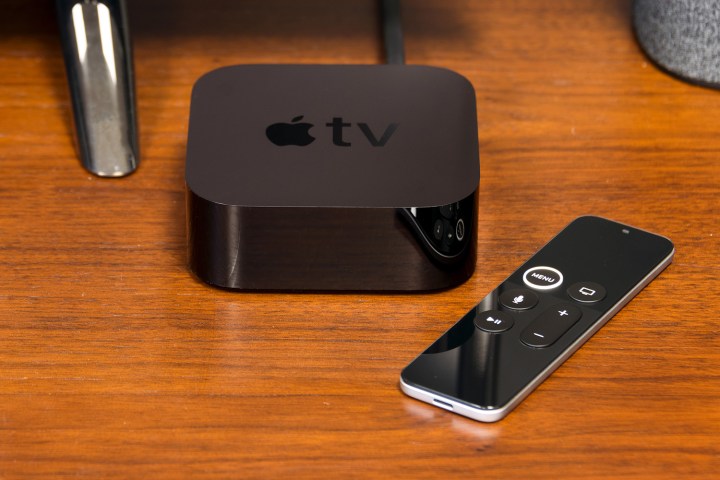With 4K resolution and High Dynamic Range (HDR) standard in virtually all new TVs, you want to make sure you buy a streamer that is compatible, but that’s only the start. You also want to make sure the streaming services you care about (and the content you want to watch) can be easily found without having to scour the web for hours.
Right now, the Amazon Fire TV Cube is our favorite streaming device. It boasts a near-endless collection of top-tier
We’ve been testing streaming devices ever since the first Apple TV hit the shelves back in 2007, so with more than a decade’s worth of experience under our belt, we know a thing or two about what makes a good one. Below, we serve up the absolute best streaming devices out there so you can get the most from your streaming experience.
Amazon Fire TV Cube
The best streaming device

Why should you buy this? The Cube isn’t just an excellent streaming device — it can control your entire entertainment system better than your remotes can.
Who’s it for? Those looking for a streamlined, Alexa-driven home entertainment experience.
Why we picked the Amazon Fire TV Cube:
It was going to take a lot to knock a Roku device out of our top spot, but the Fire TV Cube has snatched the crown of the streaming device kingdom. That might be a surprise, especially since the device was originally announced as little more than the first Fire TV box to have
Thanks to ports supporting HDMI CEC and HDMI-ARC alongside included IR blasters, you’ll be able to use voice commands to turn on your TV, swap between apps, and even switch inputs over to other connected devices like
The Cube’s nature as a home theater control hub may be its biggest selling point, but it is also just an excellent streamer. The black box is capable of
Amazon recently released a refreshed model that added
Roku Express
The best budget media streamer

Why should you buy this? It’s got everything you need for streaming the best free and premium content, for a rock-bottom price.
Who’s it for? People who don’t care about features like
Why we picked the
If you don’t need
It delivers 1080p full HD video which still looks great, and the two-cable set-up (one for power and one for HDMI) is dead easy. You won’t find MicroSD card slots or USB ports or even voice commands here, but that’s the whole point. If you want those features,
Despite its minimal hardware feature set, you still get all of the software enhancements that continue to make
Google Chromecast
The best casting device

Why should you buy this? The Chromecast syncs with your phone or other media devices for simple streaming.
Who’s it for? Anyone who just wants a simple, affordable HD streamer.
Why we picked the Chromecast (3rd generation):
If you don’t have a
Frankly, the most recent update for Google’s aging HD Chromecast doesn’t add much at all, but the fact that you can’t buy the older model anymore makes this the de facto choice. The new device does have a slightly faster framerate (60 frames per second) for 1080p content and a new look, but other than that it’s pretty much the same old Chromecast, offering the same primary appeal: Dead simple streaming on the cheap.
If you do have a
Unlike other streaming devices, Chromecasts (including the Chromecast Audio and the Ultra) use the apps you’ve already got on your phone to control playback and search for content. Simply call up your supported streaming app, click the cast button, and you’re ready to watch. Google Home also makes search snappier and more convenient than before.
The Chromecast is also deeply integrated into the Google ecosystem — or at least it can be — and supports Google Assistant, as well as any Google smart home devices. For
Roku Streaming Stick+
The best streaming stick

Why should you buy this? It’s the best streaming stick on the market, and it’s affordable to boot.
Who’s it for? Anyone who wants to stream
Why we picked the
The Streaming Stick+ delivers one of the best features-to-price ratios among streaming devices out there. You’ll be able to experience
The discreet design extends beyond just its physical profile. Thanks to powerful 802.11ac MIMO dual-band wireless support, you’ll be able to set it up anywhere within your home’s Wi-Fi range — no Ethernet required. The only actual requirement with the Streaming Stick+ is a TV or any display with an HDMI port and USB. Just plug the Streaming Stick+ into the HDMI port and the power cable into one of its USB ports (or an adapter if it doesn’t have one), and you’re done.
One of our favorite things about the Streaming Stick+ is a feature shared by all
Apple TV 4K
The best media streamer for Apple lovers
Why should you buy this? The Apple TV
Who’s it for? Users heavily invested in the Apple ecosystem.
Why we picked the Apple TV
After spending two years as an afterthought in the streamer market due to a lack of
The Apple TV
There is also a cool option that allows users to copy login info directly to the Apple TV from iPhones, iPads, and Apple
The most recent major software update for the streamer added Apple Arcade, which turns the small black box into a capable casual gaming platform that works with both Sony and Xbox Bluetooth wireless game controllers.
You can use Siri to search for content from any of the
With
One last thing we want to point out: Although many other third-party devices and smart TVs now have Apple’s TV app (along with access to Apple TV+) we think the Apple TV
Roku Ultra
The best premium set-top streaming box

Why should you buy this? It’s a powerful, well-rounded set-top streaming box bolstered by
Who’s it for? Those who want the features of the Streaming Stick+, but desire a little more horsepower and stability.
Why we picked the
The
Like the Fire TV Cube, the Ultra sports an Ethernet port to help improve connection speeds and even adds a MicroSD card slot to store even more apps or work as a source for pictures and video. It also has a USB port, so you can view content from any compatible device. The box also features a “lost remote” button that will trigger a tone from the remote (even though we all know it’s under the couch). The remote has both a headphone jack for private listening and dedicated power/volume buttons that can control TV volume, depending upon the model.
The remote now has two customizable shortcut buttons that are a snap to program: Simply speak a voice command while holding the microphone button, then hold the shortcut button until you hear a beep. The Ultra is compatible with
Night Listening mode automatically adjusts volume scene-by-scene to avoid waking up the kids, and the included JBL headphones should offer better sound for headphone playback as well. As you probably already surmised from the Streaming Stick+, we also just love the
How we test
We test our streaming players over a period of days or weeks, replicating exactly how you’d use them in real-life scenarios. That includes testing them for speed, convenience, intuitiveness, and a variety of features. Accessibility to a wide variety of apps is also crucial — after all, most TVs and Blu-ray players are already set up for basic streaming — so a designated streamer should offer something more.
A streamer might have the best hardware in the world, but this won’t matter if you can only watch content from one streaming service. In order to meet our standard, a streaming media player ideally supports all or most of the major content providers, as well as a wide variety of newer features like 4K Ultra HD and


